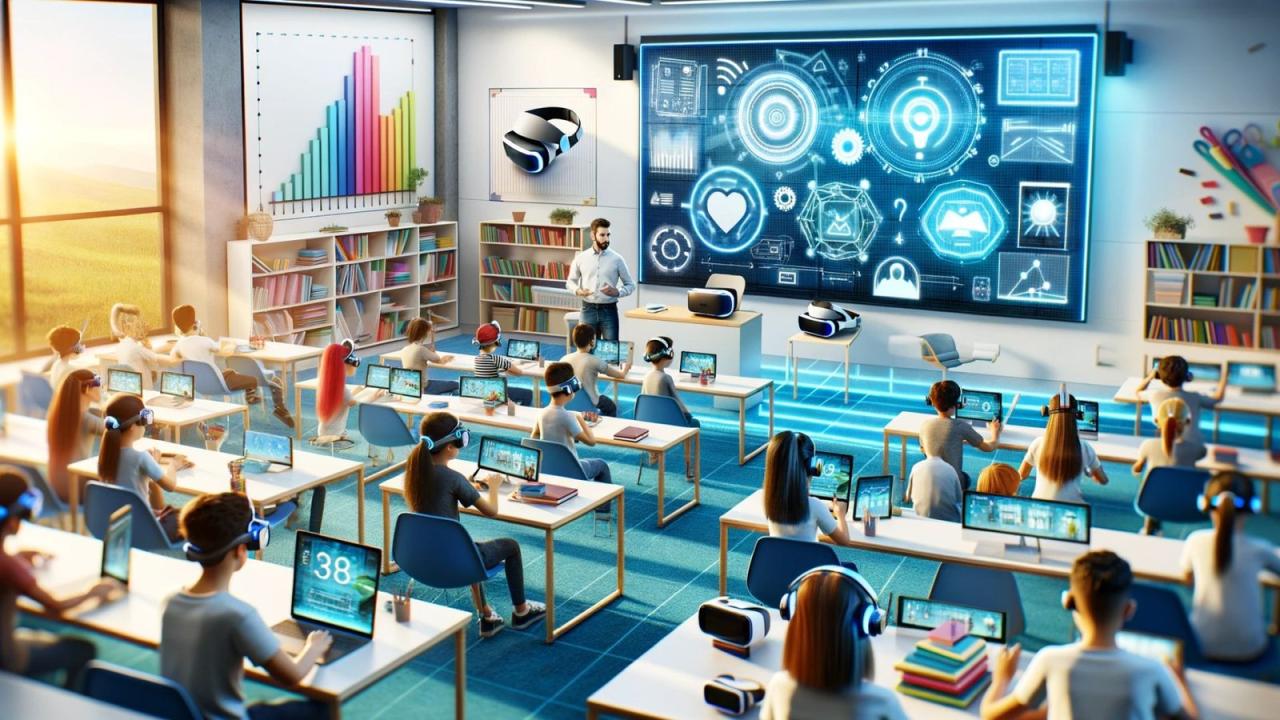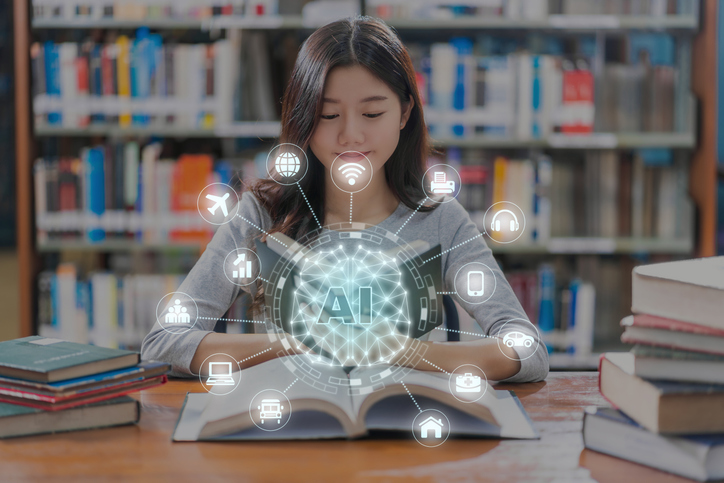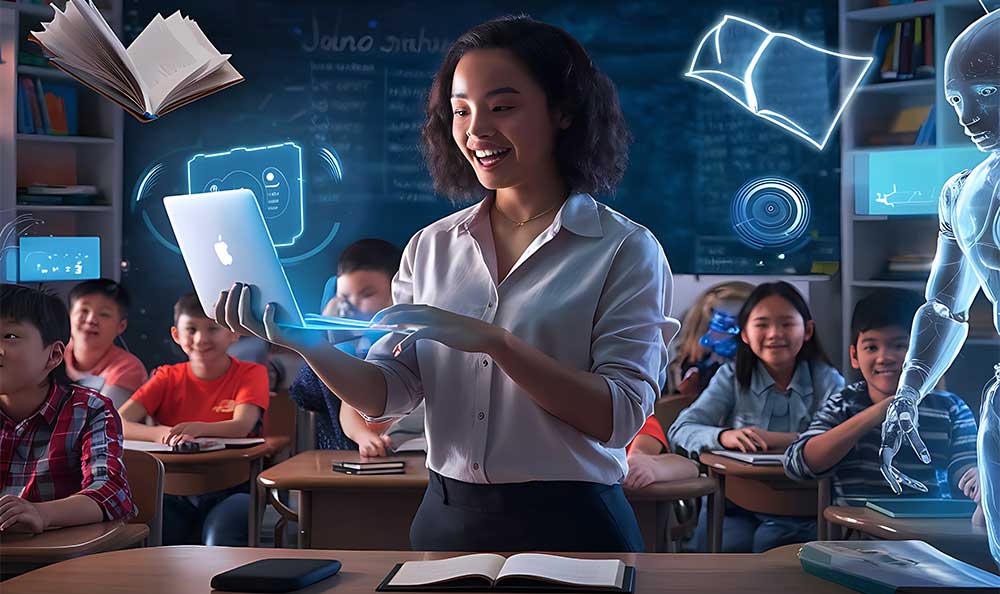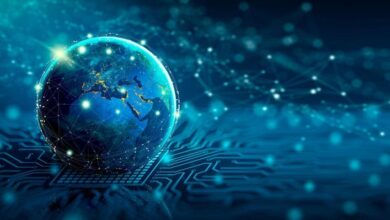Education Technology Revolutionizes Learning Worldwide


The global education sector is undergoing its most significant transformation since the invention of the printing press, moving beyond incremental improvements to fundamental paradigm shifts in how knowledge is created, delivered, and assessed. While traditional educational models served industrial societies adequately, they are increasingly mismatched with the needs of today’s digital, interconnected world. Education innovation has entered a new era characterized by personalized learning pathways, immersive technologies, and data-driven instruction that collectively promise to make learning more accessible, engaging, and effective than ever before. This comprehensive analysis explores how technological advancements, pedagogical breakthroughs, and systemic changes are converging to create educational experiences that prepare students not just for standardized tests, but for the complex challenges of the 21st century.
A. The Personalized Learning Revolution: AI-Driven Educational Pathways
The most significant shift in modern education is the move away from standardized, one-size-fits-all instruction toward truly personalized learning experiences powered by artificial intelligence and adaptive technologies.
A. Intelligent Tutoring Systems: AI-powered platforms are revolutionizing how students receive individual support and instruction.
-
Adaptive Learning Algorithms: Systems like Carnegie Learning and DreamBox use sophisticated machine learning algorithms that analyze student responses in real-time, adjusting the difficulty and sequencing of content to match each learner’s precise level of understanding and preferred learning pace. These systems can identify knowledge gaps invisible to human instructors and provide targeted remediation before students fall behind.
-
Predictive Analytics for Intervention: AI systems can identify students at risk of falling behind weeks or months before traditional assessment methods, enabling early intervention. Platforms like BrightBytes and Knewton analyze hundreds of data points—from assignment completion rates to engagement metrics—to flag students needing additional support, allowing educators to provide help before small struggles become major obstacles.
-
Natural Language Processing in Feedback: Advanced NLP systems provide immediate, detailed feedback on written assignments, identifying not just grammatical errors but also logical inconsistencies, argument strength, and stylistic issues. Tools like Grammarly and Turnitin’s Revision Assistant give students the kind of personalized writing guidance that was previously only possible through one-on-one tutoring, available 24/7 at scale.
B. Competency-Based Education Platforms: The traditional time-based educational model is being replaced by systems that focus on mastery of skills and knowledge.
-
Mastery Tracking Systems: Platforms like Empower Learning and Canvas MasteryPaths enable students to progress only after demonstrating competency in specific skills, ensuring no fundamental gaps in understanding accumulate as they advance to more complex material. This approach recognizes that learning happens at different paces for different students and prevents the ” Swiss cheese learning” that plagues traditional education.
-
Micro-credentialing and Digital Badges: Systems like Credly and Badgr allow students to earn verifiable digital credentials for specific skill acquisitions, creating comprehensive skill portfolios that are more meaningful to employers than traditional transcripts. These granular credentials provide concrete evidence of capabilities beyond course completion.
-
Personalized Learning Playlists: Drawing inspiration from entertainment services, educational platforms now curate individualized sequences of learning resources—videos, articles, interactive simulations, practice exercises—tailored to each student’s learning goals, current knowledge level, and preferred content formats. This approach respects individual learning preferences while ensuring coverage of required material.
C. Learning Analytics and Data-Informed Instruction: The collection and analysis of educational data is transforming instructional decision-making.
-
Comprehensive Learner Profiles: Systems aggregate data from multiple sources—learning management systems, assessment platforms, even biometric sensors—to create holistic pictures of each student’s cognitive and emotional learning process. These profiles help educators understand not just what students know, but how they learn best.
-
Automated Assessment and Insights: AI systems can evaluate complex student work, from mathematical problem-solving approaches to scientific reasoning in lab reports, providing teachers with detailed analytics about class-wide understanding and individual student thought processes. This reduces grading burden while providing richer insights into student thinking.
-
Longitudinal Learning Trajectories: By tracking student progress over multiple years, analytics systems can identify the most effective instructional sequences and interventions for different types of learners, continuously improving educational effectiveness across entire institutions and systems.
B. Immersive and Experiential Learning Technologies
Modern education is breaking free from the constraints of textbooks and classrooms through technologies that create rich, immersive learning experiences previously impossible or impractical to deliver.
A. Extended Reality in Education: Virtual, augmented, and mixed reality technologies are creating powerful learning environments across disciplines.
-
Virtual Laboratory Simulations: Platforms like Labster and PraxiLabs offer fully interactive virtual science laboratories where students can conduct experiments too dangerous, expensive, or time-consuming for physical classrooms—from molecular biology procedures to chemical reactions with hazardous materials. These simulations provide authentic scientific practice without physical constraints.
-
Historical and Cultural Immersion: VR experiences like Google Expeditions and TimeLooper allow students to explore ancient civilizations, walk through historical battlefields, or visit world museums without leaving their classrooms, creating emotional connections and deeper understanding than textbook descriptions alone. This technology makes abstract concepts tangible and memorable.
-
Anatomical and Structural Exploration: Medical and engineering students using AR applications can manipulate 3D holograms of human anatomy or architectural structures, viewing them from any angle and understanding spatial relationships in ways static diagrams cannot convey. Applications like Complete Anatomy and Microsoft’s HoloLens are transforming professional education.
B. Gamification and Engagement Engineering: Principles from game design are being systematically applied to increase student motivation and engagement.
-
Progress Visualization Systems: Platforms like Classcraft and Khan Academy use role-playing game elements to visualize student progress, with experience points, leveling up, and special abilities tied to academic achievements and positive learning behaviors. These systems make learning progress tangible and rewarding.
-
Collaborative Challenge-Based Learning: Systems like Breakout EDU and Minecraft Education Edition create physical and digital educational escape rooms where students must collaborate and apply knowledge from multiple subjects to solve complex puzzles, developing critical thinking and teamwork skills while making learning actively engaging.
-
Meaningful Reward Structures: Instead of traditional grades alone, educational platforms are incorporating more immediate and meaningful feedback mechanisms, including peer recognition systems, skill-based achievements, and real-world impact tracking that shows students how their learning applies beyond the classroom.
C. Global Collaborative Learning Networks: Technology is breaking down classroom walls to create authentic global learning communities.
-
Cross-Cultural Project Platforms: Services like Empatico and PenPal Schools connect classrooms across countries for collaborative projects, developing cultural understanding and global citizenship skills while working on shared challenges. These experiences prepare students for an increasingly interconnected world.
-
Expert Connection Networks: Platforms like Nepris and Skype-a-Scientist connect classrooms with industry professionals and subject matter experts, giving students direct access to real-world applications of their learning and potential career paths. This makes learning more relevant and inspires future aspirations.
-
Massive Collaborative Investigations: Initiatives like the Globe Program and Zooniverse engage students worldwide in collective data collection and analysis for environmental studies and scientific research, contributing to genuine scientific research while learning methodology and analysis skills. Students become active contributors to knowledge creation.

C. Teacher Transformation: The Evolving Educator Role
As educational technology transforms learning experiences, it is simultaneously redefining the role of educators from information deliverers to learning facilitators, coaches, and curators.
A. AI-Enhanced Teaching Assistants: Artificial intelligence is handling routine instructional tasks, freeing teachers to focus on higher-impact activities.
-
Automated Administrative Systems: AI tools automatically handle attendance tracking, grade recording, parent communication about routine matters, and even drafting of individualized education plan documents, reclaiming 10-15 hours weekly for instructional activities. Platforms like TeachFX and Edthena automate these time-consuming tasks.
-
Differentiation Support Tools: Systems like Education Elements and ScootPad provide teachers with AI-generated recommendations for grouping students and assigning appropriate activities based on current skill levels and learning needs, making effective differentiation practical in heterogeneous classrooms.
-
Resource Curation and Alignment: AI assistants like Curipod and Education Copilot help teachers quickly find and adapt educational resources that align with specific standards and learning objectives, significantly reducing lesson preparation time while improving quality through data-driven recommendations.
B. Data-Informed Instructional Coaching: Technology is creating new frameworks for teacher professional development and support.
-
Classroom Analytics Platforms: Systems like TeachFX use voice recognition AI to provide teachers with detailed analytics about their classroom discussion patterns, including talk time distribution, question types, and wait times, enabling evidence-based refinement of discussion facilitation skills.
-
Peer Observation Networks: Platforms like Edthena and Torsh enable teachers to record and share short teaching clips for targeted feedback from colleagues and instructional coaches, creating continuous improvement cycles grounded in actual classroom practice rather than theoretical models.
-
Professional Learning Micro-credentials: Just like students, teachers can now pursue competency-based professional development through systems like Digital Promise and BloomBoard, earning micro-credentials for demonstrated mastery of specific instructional skills rather than accumulating seat time in workshops.
C. Facilitator Development Programs: Teacher preparation and professional development are evolving to emphasize the skills needed for facilitative rather than directive teaching roles.
-
Project-Based Learning Certification: Programs like PBLWorks and the Buck Institute provide comprehensive training in designing and managing complex, student-driven projects that develop critical thinking, collaboration, and problem-solving skills. These approaches prepare students for real-world challenges.
-
Classroom Technology Integration Coaching: Rather than focusing on specific tools, effective programs like Google’s Certified Coach program emphasize pedagogical principles for selecting and implementing technology to enhance learning outcomes. The focus remains on learning, not just technology use.
-
Socratic Seminar and Discussion Leadership: As content delivery becomes automated through technology, teacher development increasingly focuses on facilitating rich classroom discussions that develop critical thinking and communication skills. Programs like the Paideia Method train teachers in this essential facilitation role.
D. Systemic and Structural Educational Innovation
Beyond classroom-level changes, technology is enabling transformation of educational structures and systems at institutional and societal levels.
A. Flexible Learning Environments and Modalities: The physical and temporal boundaries of traditional schooling are becoming increasingly fluid.
-
Hybrid and Blended Learning Models: Schools are implementing sophisticated rotation models that combine online instruction with face-to-face teaching, allowing for more personalized pacing and grouping than traditional whole-class instruction. Models like the Station Rotation and Flipped Classroom optimize both digital and human interaction.
-
Global Online Course Access: Platforms like Khan Academy, Coursera, and edX provide students with access to courses and subjects not available in their local schools, from advanced quantum physics to specialized computer programming languages. This democratizes access to specialized knowledge.
-
Micro-school and Learning Pod Ecosystems: Technology enables the creation of small, agile learning communities that can customize educational experiences while still accessing comprehensive curriculum resources and assessment systems. These models combine the personalization of homeschooling with the structure of traditional schooling.
B. Credentialing and Assessment Transformation: The ways learning is measured and certified are evolving to better reflect actual capabilities.
-
Project Portfolio Assessment: Systems like Pathbrite and Seesaw enable students to build comprehensive portfolios of projects, creations, and accomplishments that demonstrate applied skills more authentically than standardized test scores. These portfolios showcase growth and capability beyond academic knowledge.
-
Skills-Based Transcripts: Innovative secondary schools and universities are replacing traditional course-based transcripts with detailed records of demonstrated competencies and skills, providing much more useful information to employers and higher education institutions. The Mastery Transcript Consortium includes hundreds of schools adopting this approach.
-
Blockchain-Verified Credentials: Institutions are beginning to issue diplomas, certificates, and micro-credentials on blockchain platforms, creating permanent, verifiable, tamper-proof records of educational achievements that students control and can share with employers or other institutions. This technology prevents credential fraud while giving learners ownership of their achievements.
C. Equity and Access Expansion Technologies: Perhaps the most promising aspect of educational innovation is its potential to make high-quality learning experiences available to previously underserved populations.
-
Adaptive Accessibility Platforms: Tools like Microsoft’s Immersive Reader and Book integrate multiple accessibility features—text-to-speech, translation, picture dictionaries, focus mode—that automatically adapt to individual learner needs, making the same content accessible to students with diverse abilities and language backgrounds.
-
Low-Bandwidth Learning Solutions: Recognizing the digital divide, developers are creating educational platforms that function effectively on inexpensive devices and with limited internet connectivity, such as Google’s YouTube Go and Kolibri’s offline learning platform. These solutions extend educational technology to resource-constrained environments.
-
Scaffolding and Support Automation: AI systems can provide non-judgmental, infinitely patient support to students who might hesitate to seek help from human teachers, potentially reducing the achievement gap by ensuring all students receive the assistance they need when they need it. Tools like MATHia and ASSISTments provide this always-available support.

E. Implementation Challenges and Ethical Considerations
Despite the transformative potential of educational technology, successful implementation requires careful attention to significant challenges and ethical considerations.
A. Digital Equity and Access Divides: The very technologies intended to expand educational access risk exacerbating existing inequalities if not implemented thoughtfully.
-
Device and Connectivity Access: Even in wealthy nations, significant portions of students lack reliable internet access or appropriate devices for digital learning, requiring comprehensive one-to-one device programs and community wifi initiatives. The homework gap remains a persistent challenge.
-
Digital Literacy Variation: Students enter technology-enhanced learning environments with vastly different levels of digital literacy and comfort, necessitating systematic digital skills development alongside academic content. Assuming universal digital fluency creates new barriers.
-
Home Support Structures: The effectiveness of many educational technologies depends on home environments conducive to focused learning, creating challenges for students lacking quiet study spaces or parental technology support. Schools must provide alternative access points and support systems.
B. Data Privacy and Student Protection: The extensive data collection inherent in personalized learning systems creates significant privacy concerns.
-
Comprehensive Data Governance: Schools and technology providers must implement clear policies regarding what student data is collected, how it is used, who can access it, and how long it is retained, with particular sensitivity around behavioral and biometric data. Regulations like COPPA and FERPA provide frameworks but require vigilant implementation.
-
Student Data Ownership: Complex legal and ethical questions arise regarding who owns and controls student data—the student, parents, school, or technology provider—especially data that could impact future educational and employment opportunities. Clear policies must balance educational benefit with individual rights.
-
Protection from Commercial Exploitation: Strict safeguards are needed to prevent educational technology platforms from using student data for commercial purposes like targeted advertising or selling to third parties without explicit consent. The Student Privacy Pledge represents one industry initiative addressing these concerns.
C. Teacher Preparation and Support Systems: The effectiveness of educational technology depends entirely on teachers feeling prepared and supported in its use.
-
Ongoing Professional Development: One-time technology training proves consistently ineffective; teachers need continuous, just-in-time support as they integrate new tools into their teaching practice. Effective professional development is job-embedded and sustained over time.
-
Technical Support Infrastructure: Schools must provide reliable, immediate technical support for both teachers and students to prevent technological glitches from derailing instruction and frustrating all participants. Without robust support, technology creates more problems than it solves.
-
Curriculum Integration Guidance: Teachers need support in understanding how to integrate new technologies meaningfully into their curriculum rather than using them as add-ons or substitutions for existing practices without pedagogical benefits. Technology should enhance learning goals, not distract from them.
Conclusion: The Future of Learning in an Innovative Era
The transformation of education through technology represents more than just new tools in classrooms—it constitutes a fundamental reimagining of how learning happens, who can access quality education, and what skills we prioritize developing in future generations. The most successful educational institutions will be those that view technology not as a silver bullet but as a powerful enabler of more personalized, engaging, and effective learning experiences. As these innovations continue to evolve and converge, we stand at the threshold of an educational future that is more adaptive, inclusive, and meaningful than ever before. The ultimate measure of success will not be technological sophistication but whether these innovations genuinely prepare all students to flourish in a complex, rapidly changing world while developing a lifelong love of learning. This educational transformation represents one of the most significant developments in how society cultivates human potential, with implications that will resonate for generations to come.
Tags: education technology, edtech, personalized learning, digital education, future of learning, educational innovation, classroom technology, online education, learning analytics, AI education, immersive learning, educational transformation



